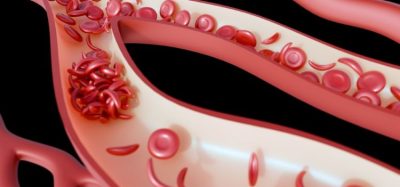Nucleation identification benefits from new detection method
Posted: 31 July 2018 | Mike Stones | No comments yet
The detection of crystal nucleation has taken a step forward, after French scientists developed a new method of identification.


Drug crystals
Understanding crystal nucleation promises to become easier for pharmaceutical firms, after researchers developed a new method of identifying when crystals form.
Nucleation is the process by which, as a solution evaporates, the dissolved chemicals concentrate to form crystals. To study the process, scientists often use microscopic droplets as miniature experiments that can run quickly, in parallel, and in a small space. But this requires high-resolution images, which limits the number of droplet images that can be processed simultaneously.
This challenge was recently overcome by scientists at the French National Centre for Scientific Research and Aix-Marseille University, France. They achieved this by focusing their measurements on the contrast between droplets and their surrounding medium. This technique was said to provide the most accurate and efficient method for detecting crystal nucleation so far discovered.
“It’s like saying when someone became pregnant, once the baby is outside,” said Romain Grossier, an author of the research paper. “We detect the moment of pregnancy.”
Nucleation is an inherently stochastic
Crystal nucleation is an inherently stochastic or random process. Estimating each nucleation time requires growth models that work backward from the time at which the crystal grew to a detectable size. This temporal gap can range from several minutes to hours.
To calculate the time it takes for a crystal to nucleate in microdroplet form, the team generated a grid of identical salt water microdroplets covered in a thin layer of oil. Since water is slightly soluble in oil at these ratios, the water began to diffuse into its surrounding, mimicking the evaporation process.
The scientists converted the image of each droplet and its surrounding region into a scalar, the standard deviation of the pixels’ greyness, and tracked this value as it changed. When the crystal forms, its presence hinders the smooth evolution of the refractive index, which appears as a sudden jump in the greyness level. Detecting that activity enabled the scientists to measure accurately the time to nucleation, without resolving the crystal or making assumptions about the nucleation mechanisms.
Salt concentrations in the microdroplets
High salt concentrations in the microdroplets cause explosive growth, cutting the delay between nucleation and detection to 0.5 seconds or less. The scientist noted each droplet also disappeared for a short period when its refractive index coincided with the surrounding medium. Since that always occurred at the same concentration for a given system, it can be calculated in advance.
Further research is planned to develop a model for the concentration between when the droplet disappears and the nucleation time that may enable scientists to resolve competing theories about crystal nucleation in the future. The team plans to increase the independence of the microdroplets in future experiments.
In addition to the pharmaceutical sector, the research is expected to also benefit the food and microelectronics industries.
The results of the research were published in the journal AIP Advances.
Related topics
Drug Manufacturing, Industry Insight, Protein Crystallisation
Related organisations
AIP Advances, Aix-Marseille University, French National Centre for Scientific Research








